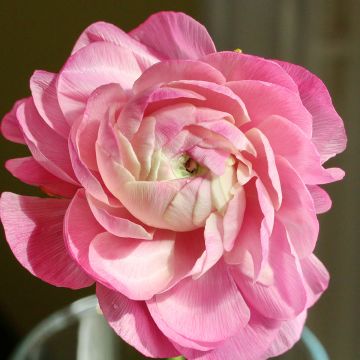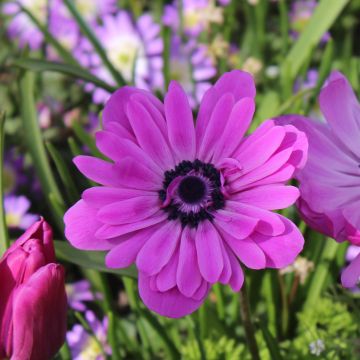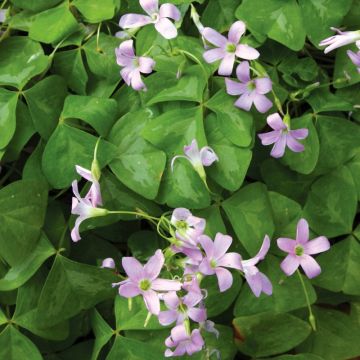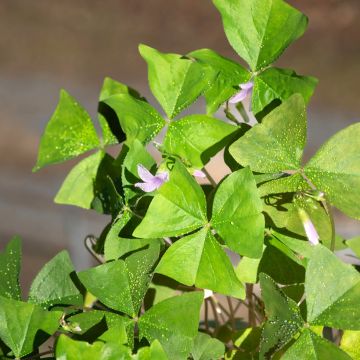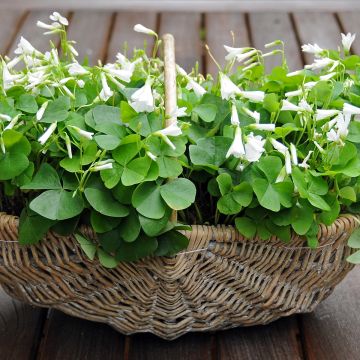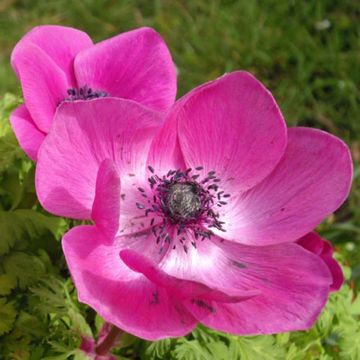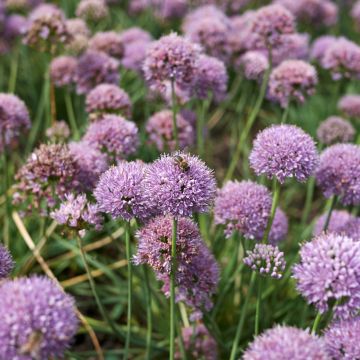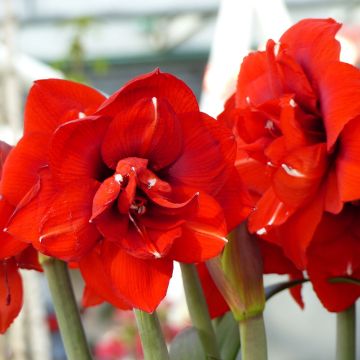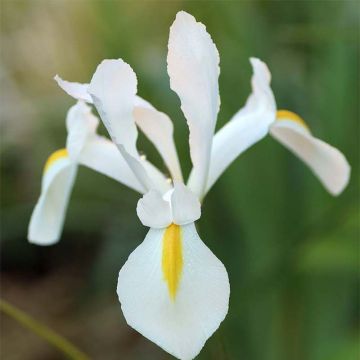

Calochortus Cupido - Tulipe des Mormons
Calochortus lilacinus Cupido
Calochortus lilacinus Cupido
Lilac Mariposa Lily, One-flowered Mariposa lily
Why not try an alternative variety in stock?
View all →This plant carries a 6 months recovery warranty
More information
We guarantee the quality of our plants for a full growing cycle, and will replace at our expense any plant that fails to recover under normal climatic and planting conditions.
From €5.90 for pickup delivery and €6.90 for home delivery
Express home delivery from €8.90.
Does this plant fit my garden?
Set up your Plantfit profile →
Description
Calochortus lilacinus 'Cupido' (synonym Calochortus uniflorus) is a small Californian bulbous plant with soft pink spring flowers. Rarely available for sale, this plant is quite delicate to grow in the ground: its growth is winter-based, its flowering is fairly early in spring, and then the bulb goes dormant in summer in a soil that must remain dry. Well adapted to the Mediterranean climate, this Calochortus Cupido thrives in rockeries or in a sunny border where it will gradually expand and faithfully flower each year. Elsewhere, you can plant the bulbs in a pot to keep them dry during the summer dormancy period, and in a cold greenhouse in winter.
Calochortus lilacinus 'Cupido' belongs to the lily family, just like tulips and lilies, to which it bears a resemblance. This botanical species is native to the western part of North America (Oregon, California), in semi-arid regions with a Mediterranean climate that is wet in winter and dry in summer. There, it is found in meadows that are slightly moist in winter and early spring, always in well-drained soil. It is a perennial herbaceous plant that grows from a bulb. Flowering occurs from late March to April, depending on the climate. The winter growth consists of long, narrow, bright green leaves resembling grass. The flower stems are erect, 20 to 40 cm (8 to 16in) tall, and unbranched. At the end of each stem, a flower in the shape of a cup measuring 3 to 5 cm (1 to 2in) in diameter blooms. Each flower is composed of 3 large rounded petals, pearly pale pink in colour, surrounding blue anthers. After flowering, in early summer, the foliage dries up and the plant goes dormant. The Calochortus lilacinus bulb can withstand occasional freezing temperatures, but it cannot tolerate humidity during the dormant period. The mother bulb produces numerous small bulblets at the base of the flower stem.
Calochortus lilacinus 'Cupido' is easy to grow in Mediterranean regions, where it brings colour to rockeries from the first sunny days. You can plant it in small groups of 10 among shrubs in the scrubland, along with botanical tulips and narcissus that bloom at the same time. It is also a lovely plant to grow in a pot to enhance the terrace or balcony in spring. To accompany it, consider Felicia, Gazania, or Cape Daisies (Osteospermum), other beautiful South African plants that thrive in the same growing conditions.
Report an error about the product description
Plant habit
Flowering
Foliage
Botanical data
Calochortus
lilacinus
Cupido
Liliaceae
Lilac Mariposa Lily, One-flowered Mariposa lily
North America
Other Spring bulbs A to Z
Planting and care
In open ground, only in Mediterranean climates, plant Calochortus Cupido in a rockery or at the base of a warm and sunny wall in a light, well-drained soil, rich in humus, and rather fertile. Plant the bulblets at a depth of 15 cm (6in), making a mound if necessary. To propagate the plant: the bulblets will be collected as soon as the foliage has dried up to be replanted elsewhere.
In a pot, cultivate your Calochortus Cupido in a mixture of potting soil and sand. Water sparingly when the vegetation emerges from the ground in autumn, then regularly throughout the growth and flowering period. Decrease watering as the leaves wither, to ensure dormancy of the bulblets in a dry substrate, which is essential. Overwinter your pot in a place protected from severe frost, but in an unheated room.
In theory, this bulbous plant starts growing in autumn, retains its foliage in winter, and flowers in spring. Throughout this period, the growing substrate should therefore remain moist.
Calochortus lilacinus does not withstand temperatures below -8°C/-10°C (14°F), in a very well-drained soil.
Planting period
Intended location
Care
This item has not been reviewed yet - be the first to leave a review about it.
Haven't found what you were looking for?
Hardiness is the lowest winter temperature a plant can endure without suffering serious damage or even dying. However, hardiness is affected by location (a sheltered area, such as a patio), protection (winter cover) and soil type (hardiness is improved by well-drained soil).

Photo Sharing Terms & Conditions
In order to encourage gardeners to interact and share their experiences, Promesse de fleurs offers various media enabling content to be uploaded onto its Site - in particular via the ‘Photo sharing’ module.
The User agrees to refrain from:
- Posting any content that is illegal, prejudicial, insulting, racist, inciteful to hatred, revisionist, contrary to public decency, that infringes on privacy or on the privacy rights of third parties, in particular the publicity rights of persons and goods, intellectual property rights, or the right to privacy.
- Submitting content on behalf of a third party;
- Impersonate the identity of a third party and/or publish any personal information about a third party;
In general, the User undertakes to refrain from any unethical behaviour.
All Content (in particular text, comments, files, images, photos, videos, creative works, etc.), which may be subject to property or intellectual property rights, image or other private rights, shall remain the property of the User, subject to the limited rights granted by the terms of the licence granted by Promesse de fleurs as stated below. Users are at liberty to publish or not to publish such Content on the Site, notably via the ‘Photo Sharing’ facility, and accept that this Content shall be made public and freely accessible, notably on the Internet.
Users further acknowledge, undertake to have ,and guarantee that they hold all necessary rights and permissions to publish such material on the Site, in particular with regard to the legislation in force pertaining to any privacy, property, intellectual property, image, or contractual rights, or rights of any other nature. By publishing such Content on the Site, Users acknowledge accepting full liability as publishers of the Content within the meaning of the law, and grant Promesse de fleurs, free of charge, an inclusive, worldwide licence for the said Content for the entire duration of its publication, including all reproduction, representation, up/downloading, displaying, performing, transmission, and storage rights.
Users also grant permission for their name to be linked to the Content and accept that this link may not always be made available.
By engaging in posting material, Users consent to their Content becoming automatically accessible on the Internet, in particular on other sites and/or blogs and/or web pages of the Promesse de fleurs site, including in particular social pages and the Promesse de fleurs catalogue.
Users may secure the removal of entrusted content free of charge by issuing a simple request via our contact form.
The flowering period indicated on our website applies to countries and regions located in USDA zone 8 (France, the United Kingdom, Ireland, the Netherlands, etc.)
It will vary according to where you live:
- In zones 9 to 10 (Italy, Spain, Greece, etc.), flowering will occur about 2 to 4 weeks earlier.
- In zones 6 to 7 (Germany, Poland, Slovenia, and lower mountainous regions), flowering will be delayed by 2 to 3 weeks.
- In zone 5 (Central Europe, Scandinavia), blooming will be delayed by 3 to 5 weeks.
In temperate climates, pruning of spring-flowering shrubs (forsythia, spireas, etc.) should be done just after flowering.
Pruning of summer-flowering shrubs (Indian Lilac, Perovskia, etc.) can be done in winter or spring.
In cold regions as well as with frost-sensitive plants, avoid pruning too early when severe frosts may still occur.
The planting period indicated on our website applies to countries and regions located in USDA zone 8 (France, United Kingdom, Ireland, Netherlands).
It will vary according to where you live:
- In Mediterranean zones (Marseille, Madrid, Milan, etc.), autumn and winter are the best planting periods.
- In continental zones (Strasbourg, Munich, Vienna, etc.), delay planting by 2 to 3 weeks in spring and bring it forward by 2 to 4 weeks in autumn.
- In mountainous regions (the Alps, Pyrenees, Carpathians, etc.), it is best to plant in late spring (May-June) or late summer (August-September).
The harvesting period indicated on our website applies to countries and regions in USDA zone 8 (France, England, Ireland, the Netherlands).
In colder areas (Scandinavia, Poland, Austria...) fruit and vegetable harvests are likely to be delayed by 3-4 weeks.
In warmer areas (Italy, Spain, Greece, etc.), harvesting will probably take place earlier, depending on weather conditions.
The sowing periods indicated on our website apply to countries and regions within USDA Zone 8 (France, UK, Ireland, Netherlands).
In colder areas (Scandinavia, Poland, Austria...), delay any outdoor sowing by 3-4 weeks, or sow under glass.
In warmer climes (Italy, Spain, Greece, etc.), bring outdoor sowing forward by a few weeks.

































